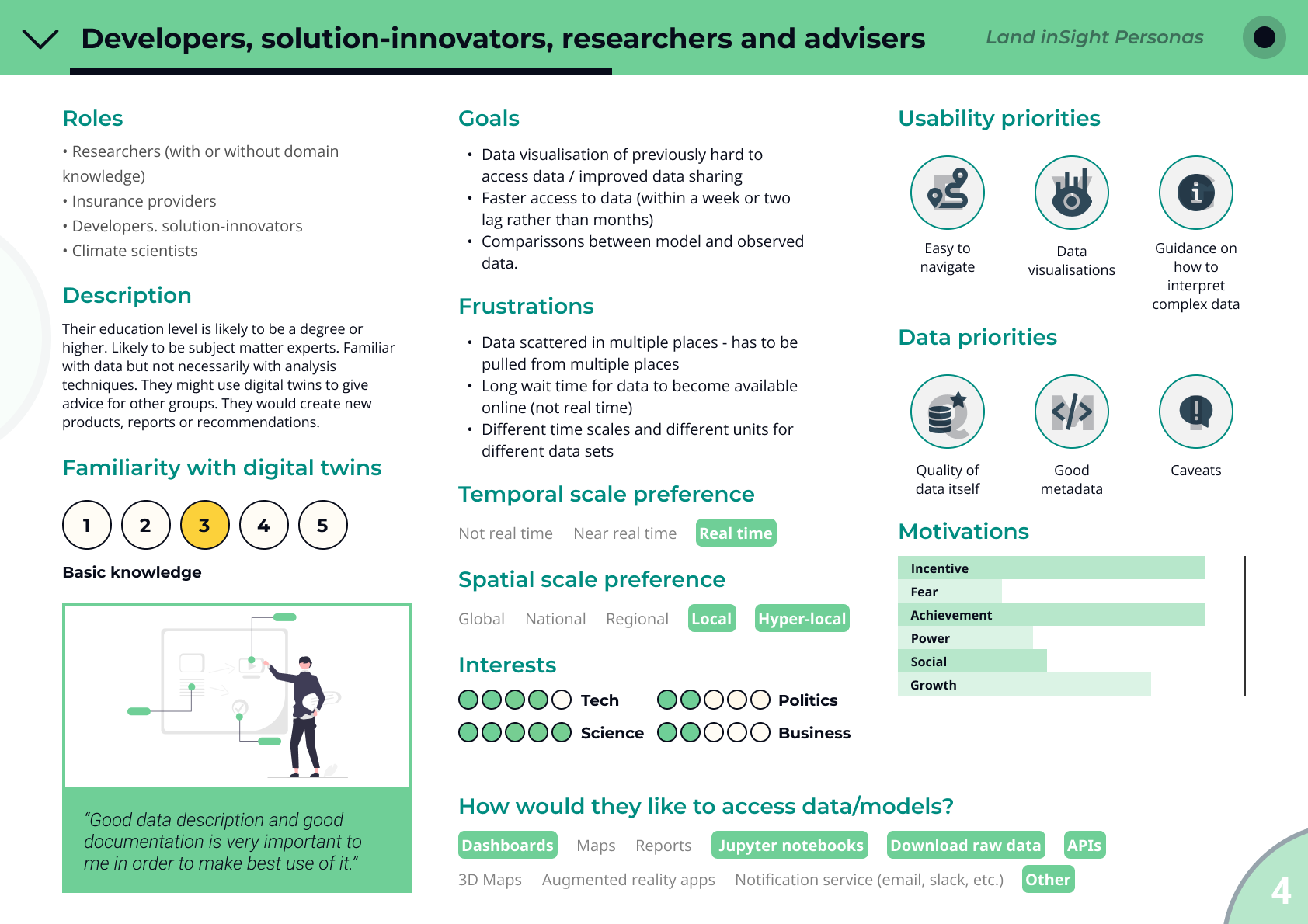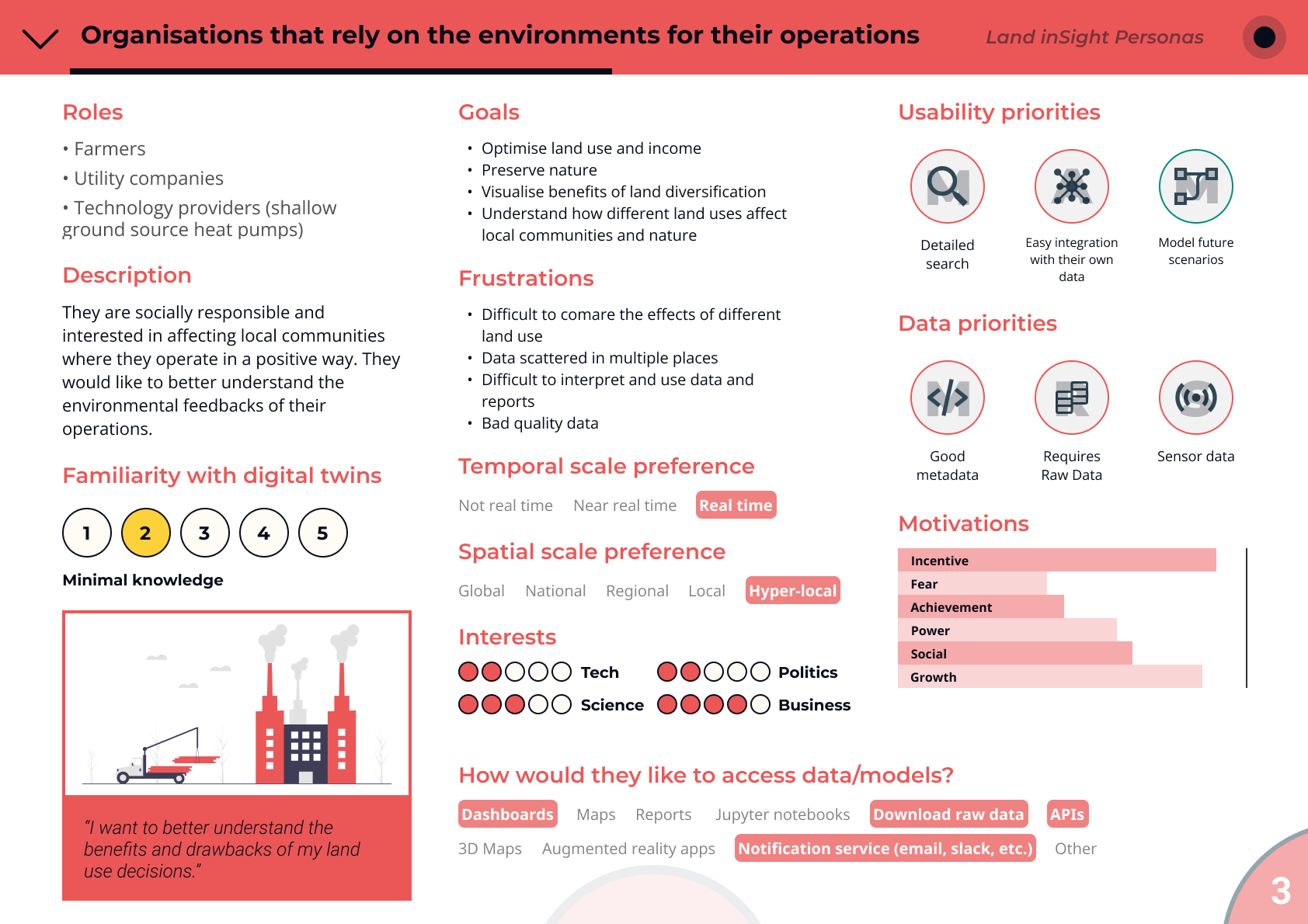Overview
Personas are representations of user groups whom we expect to use our products. They help to capture information about our users. Personas ideally should be created based on qualitative or quantitative research. However, you can also create personas based on assumptions. If possible, these ‘Assumption personas’ should later be verified with user research.

Persona template
Description
Personas are representations of user groups that share common traits and goals. They are usually discovered in the research stage by meeting, observing and interviewing the potential users. They help to organise both the quantitative and qualitative data in one place and make it easier for the team to empathise with the users.
When to use it?
When you want to summarise and visualise qualitative research findings in a way that is easy to understand and share with the team.
How to create and use personas
Personas can be created individually or as a group effort. You can start by answering the following questions:
- Who are the primary users of our products? (e.g.: data scientist, policy maker, insurance provider, etc.)
- What are current behaviour patterns of each user group?
- What other information about them is relevant? (e.g: Goals, Frustrations, Common behaviours, science/technology knowledge level)
- What is the context or circumstances in which this persona will use our product?
To ensure that personas are effective and useful:
- Share them
- Reference them when creating user journeys
- Create usability tests that are targeted at specific personas
If you are working with sensitive data or information consider creating anti-personas as well. Anti-personas are groups of people who might try to misuse your product or service.
Examples
 Developers, solution-innovators, researchers and advisers
Developers, solution-innovators, researchers and advisers
 Organisations that rely on the environments for their operations
Organisations that rely on the environments for their operations